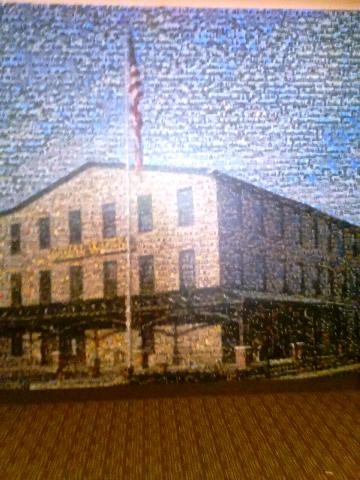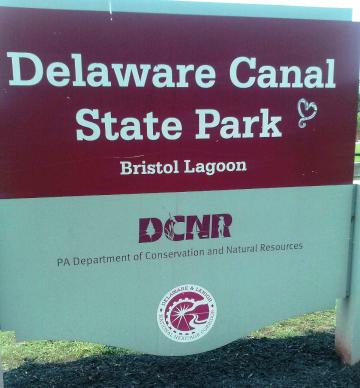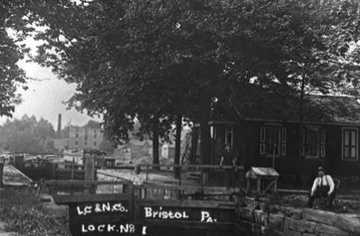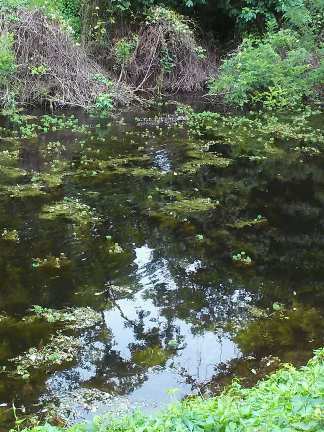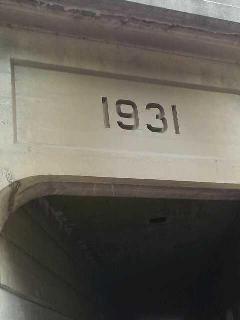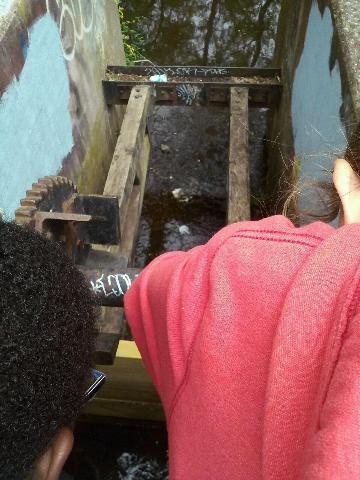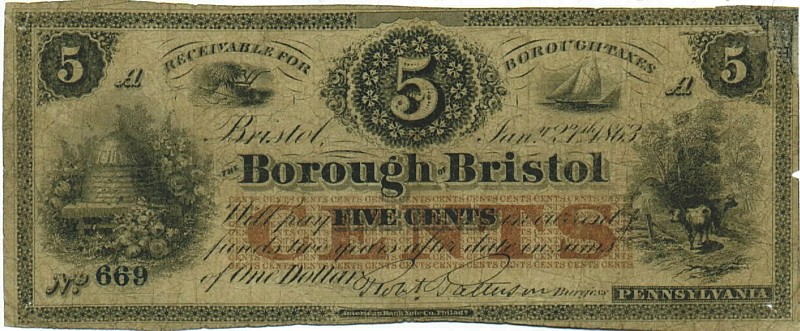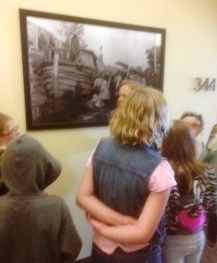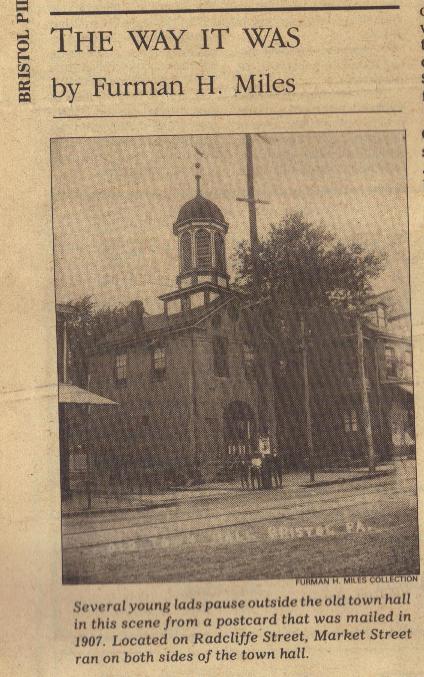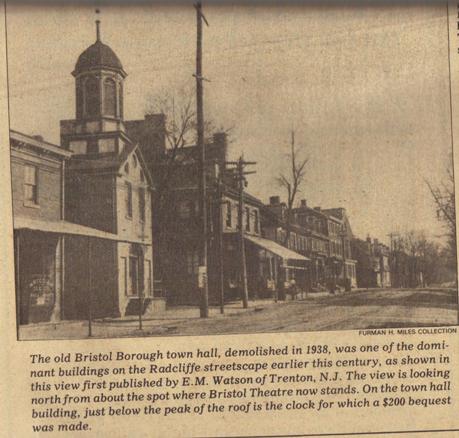Bristol Bits Tour a Bit of Bristol
by Cate Murway
History may not always be a student favorite, but one way to hook kids on the subject is to go local.
Few activities offer more opportunity for a rewarding cross-disciplinary lesson in a real world setting than the study of one’s own hometown's past.
Many people in Bristol Borough, formerly called Buckingham, have no idea about the history of their own town. MaryLou Tantum set out to remedy that, starting with her fourth grade Snyder-Girotti students.
Student learning need not be restricted to the traditional classroom environment and the Warren Snyder-John Girotti Elementary/Middle School teachers are proving once again that the acquisition of knowledge can and does occur in a wide variety of locations.
Their empowering, pioneering curriculum initiatives prove that no child should be left inside. But how could they incorporate teaching the town's rich history into the curriculum? A walking tour, requiring no textbooks, while learning history through a local lens of interesting and evocative primary sources, has proved to be an engaging and powerful way to introduce the children to the past.
History becomes much more meaningful when it is understood that the current residents are the heirs of the ideas, values and traditions that have shaped our community.
Equipped with audio players on loan from the Margaret R. Grundy Memorial Library on 680 Radcliffe Street, Mrs. Tantum’s class set out for their tour of one of the oldest towns, historic Bristol on the Delaware. A child’s quest for knowledge knows no bounds or limits, and is never satisfied. They all listened intently to the presentation voiced by the Bristol Riverside Theatre Artistic Director, Keith Baker while their field trip became a learning laboratory.
Focus began on Radcliffe Street, with a range of modest dwellings to waterfront mansions, as well as other areas, all rich in historically significant architecture. The students chatted on their way to the Canal Basin, walking through the parking lot to the area marking Lock #1 where the barges once unloaded cargo. Tori, Jadyn and Gianna stopped to check out the fresh water tidal marsh, and they all continued toward the Wharf area, asking questions about the ethnic monuments and landmarks located in Lion’s Park.
Many easily identified the figure of Harriet Tubman, the well-known slave who led many to freedom, commissioned by the African-American Historical and Cultural Society of Bucks County.
Morgan announced that she already knew about the “underground railroad thingy”.
Next was the monument designed after one of the famous sentry boxes or garitas [inspection stations] found at El Morro Castle in San Juan, Puerto Rico; and then they stopped at the Celtic High Cross that serves witness to the Irish, Scottish, and Welsh immigrants who made Bristol their home.
Lastly, the group admired the Christopher Columbus monument, a lasting tribute to the Italian immigrants who followed centuries later.
Kyliee and Katrina were able to proudly name and describe them all.
Was it lunch yet? They checked the sun dial… hiking makes one hungry!
Two by two, each walked with a partner up to ‘Kings Highway’ where Mill and Radcliffe Streets meet. Ryan admired one of the oldest inns in continuous operation in the country, the King George II. And wait….what? There was a building in the middle of the street? They learned that the original town hall on Market Street was demolished when the current Borough Hall was built.
Continuing on Radcliffe, past the historic stucco, stone and brick homes, they stopped at the fountain to see the Frankford-Bristol Turnpike 19T marker that represented the 19 miles along the turnpike from that spot to Philadelphia’s waterfront at Market Street.
The word "turnpike" itself comes from the fact that these gates, called "pikes," were "turned" once the toll was paid. Typical toll rates were twenty-five cents for every coach, with additional charges of four cents for every man and horse.
After an ‘inside-the-school lunch’, made necessary by a quick potent rain shower, the students strolled back into parts of the Bristol Industrial Historic District, an area that encompasses nine landmarks including the Grundy Mill Complex and the Canal Works on Canal Street.
Last Friday, they admired the biggest nod to history when they found a timeline throughout the halls in Canal Works, repositories of historic photographs depicting changing town landscapes to help better understand settlement patterns, documents and maps. All were invaluable tools to help the youngsters consider the significance of what they were learning and realize how the past incorporated seamlessly to the present.
Lainie admired a massive composite picture of Canal Works, composed of many small pictures. She cheerfully agreed to share her many phone captures from along the tour.
Mateo liked “exploring how Bristol was made” realizing a lot happened before he was born. The period scales and equipment piqued Mikayla’s interest. But it was the vintage money that attracted Michael.
“That picture”, he pointed, “because it’s a dollar and today 5 cents is a nickel!”
The group smilingly left the property owned by Bernard Mazzocchi III, clutching a “bouncing top- speedy shooter” toy, a gift from ‘Super Impulse Toys’ located in one of the suites in his Canal Works building. The day just kept getting better!
The past waited to be discovered as the present matched on. The students began their trek on the towpath. In class, they had read “Tales of the Towpath”, written by Dennis Scholl, the Outreach Coordinator at “Delaware & Lehigh National Heritage Corridor”.
They learned that it had been a dangerous life for the children born and raised on canals with the obvious threat of drowning, being kicked by horses, crushed by bridges and locks, burnt by stoves and scalded by pans and kettles. The trail users still thought just walking the path was very hard work, past the Bristol Marsh, a unique and sensitive freshwater habitat, through Bristol, and eventually ending at Green Lane.
The enthusiastic student engagement quieted on the smooth asphalt Spur Line trail back to the school, but aspiring singer, Nashalie sang along the way.
Inspired by their teacher, the Snyder-Girotti fourth graders learned more about the people, places and events that formed this community and more about what makes historic Bristol on the Delaware so very special.
The audio tour was made possible by a United Way Community Impact Grant and is a collaboration of the Bristol Borough Community Partnership, Bristol Cultural and Historical Foundation, Bristol Riverside Theatre, Conwell-Egan Catholic EAST Program, Margaret R. Grundy Memorial Museum and Library, and The Artists of Bristol on the Delaware. www.tourbristol.org
With the use of a smartphone, tablet, or MP3 player, one can enjoy more than 300 years of Bristol’s history. Or borrow an audio player [bring your own headphones] or purchase a pair from the Grundy Library to tour Bristol Borough’s National Register Historic District at your own pace!
Recommend a “Spotlight”. E-mail vjmrun@yahoo.com
Bristol Pilot 3.27.86
